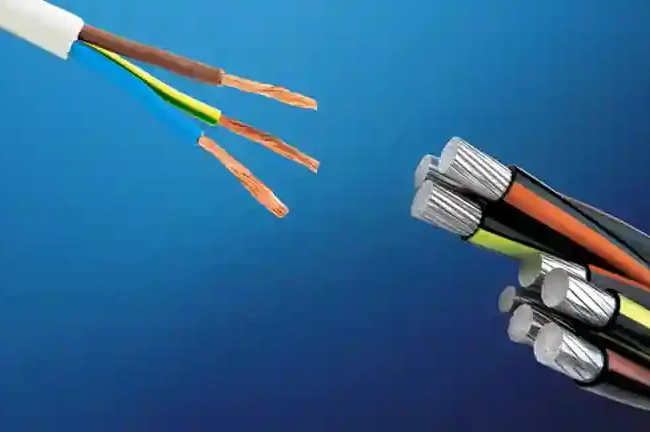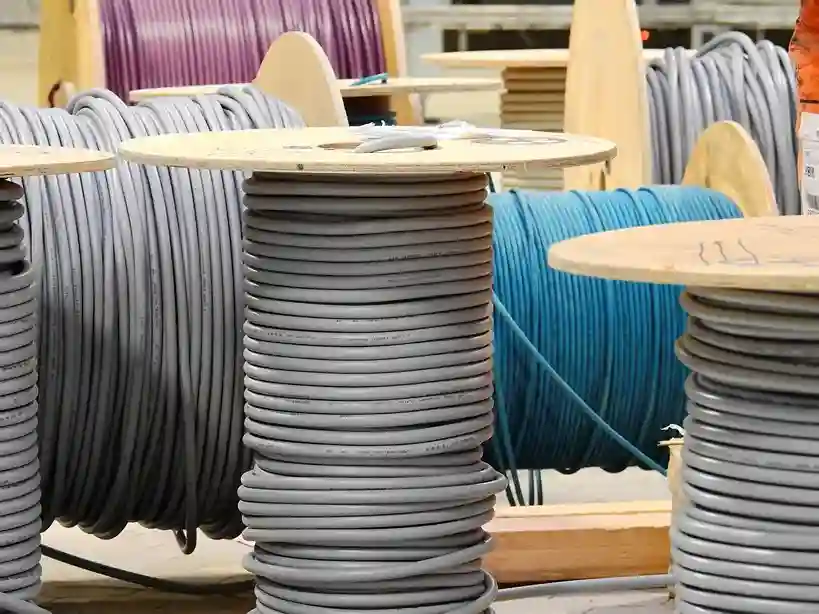CableHero: Cable Size Calculator App Guide
CableHero: Cable Size Calculator Guide
CableHero Cable Size Calculator can help you in deciding which is the most suitable cable size for your installation consistent with the AS/NZS 3008 Standard. Follow the guide below to calculate your results.
Notice: All CableHero Cable Size Calculator results are calculated from the AS/NZS 3008 Standard for installations that are in common use at working voltages up to and including 0.6/1 kV at 50 Hz a.c. in Australia.
Create a New Project
To create or add a New Project, click on the New Project button.
Fill out the New Project window with your chosen Project Name and Project Description (Optional).
CableHero Calculation Guide
Add a New Calculation
To create or add a New Calculation, click on the New Calculation button within your selected Project.
This will allow you to add the New Calculation inside your selected Project.
Fill out the New Calculation interface with your preferred New Calculation Name and Calculation Description (Optional).
On this New Calculation interface, other calculation fields will be available for you to fill out with data.
It will depend on the type of calculation you are trying to make.
Load
It’s important to identify the load type and input the amount of current that will flow or be consumed.
Current and Load Type
Load Types:
Amps – Amperes, unit of current flow, applicable only to electricity
Watts – unit of power, is Amps when multiplied by Voltage
kW – Kilowatt, a bigger measurement of power, 1 kW = 1,000 Watts
h.p. – Horsepower, unit of power, the rate at which work is done
Power Factor
Input the power factor which is the ratio of the real power to the total power factor. The power factor range should be a number between 0 and 1.
Supply
Phase Type
There are three types of power supply system categories to choose from.
AC (Alternating Current) – the current of your power supply periodically inverts its direction.
1ph – Single-Phase, your supply system includes two wires
3ph – Three-Phase, your supply system includes three or four wires
DC (Direct Current) – the current of your power supply flows in one constant direction.
Length of Run (m)
Input the cable length in metres (m).
Voltage (v) and Voltage Drop Threshold (%)
The AC voltage range of a homeowner’s system is commonly at 230 V, with an allowed range between 216 to 263 V. Based on the Standard, AS60038, 230V is set as the nominal voltage with a +10% to –6% variation at the point of supply.
According to AS/NZS 3000, low voltage shouldn’t exceed 1000 V (AC) or 1,500 V (DC).
The Standards also require that the total voltage drop from your supply point to anywhere in your installation be kept below 5% of the full line voltage.
Fault level (A) and Fault time (s)
Input the Fault Level (A, Amperes) which is the potential maximum fault current that will flow in your installation when a fault happens.
The Fault time (s, seconds) is the duration of your fault’s clearance time.
Cable
Cable Cores
There are two cable core types to choose from.
Single-core – cables with a single conductor, often manufactured either with copper or aluminium insulation and are used for homes, shops, and commercial installations.
Multi-core – cables that provide multiple functions such as earthing or grounding, neutral, and live, for higher power demands commonly in the industrial sector.
Insulation
There are several types of cable insulations used in Australia. You may choose from the eight options in the drop down menu under Insulation.
Conductor
CableHero provides three main types of conductor materials used for cables for you to choose from:
Copper – most common type, resistant to corrosion, sensitive to ammonia and sulphur fumes
Copper/Solid – copper conductors that offer higher current capacity
Copper/Flex – copper conductors that offer better bendability or flexibility
Aluminium – more flexible and has a lower melting point
Table 4
There are many cable installation methods that can be implemented in different situations. Choose the type of situation and wiring installation method from the following options:
Unenclosed Spaced
Unenclosed Spaced From Surfaced
Unenclosed Touching
Unenclosed Exposed To Sun
Enclosed Wiring Enclosure In Air
Thermal Insulation Partially Surrounded By Thermal Insulation
Thermal Insulation Completely Surrounded By Thermal Insulation
Buried Direct
Underground Wiring Enclosure Combined
Underground Wiring Enclosure Separated
There are illustrations that accompany each cabling system for your reference.
Automatic Cable Derating (Use Assistant)
The Automatic Cable Derating Factor will be displayed as such:
To get an overall derating factor, click on the Use Assistant sliding button and select the specific conditions of your installation:
Arrangement (1)
Bunched
Cable Arrangement
No. of Circuits
CableTray
Cable Arrangement
No. of Circuits
Air Temperature (2)
Ambient Temperature (°C)
Maximum Temperature
CableHero Calculation Results
Cable Size
Circuits
In this section, there are still customisable data fields for two types of circuits – Active and Neutral. You can still change the data by clicking the slider button.
Active (mm2) – available size value options in the dropdown menu
No. of Circuits – input the number of circuits
Spare Capacity – decreasing the conductor size also reduces the spare capacity, increasing the number of circuits amplifies the spare capacity
Neutral (mm2) – size value options are available in the dropdown menu.
No. of Circuits – input the number of circuits
Earth (mm2) (Not customisable)
No. of Circuits
Voltage Drop (V and %)
The calculated voltage drop is in volts (V) and as a percentage.
To make precise voltage drop calculations, CableHero evaluates the following:
Load Current
Power Factor
Phase Type
Cable Length
Insulation Type (Operating Temperature)
Conductor Material
Resistance and Reactance
CableHero, compliant with AS/NZS 3008, uses Ohm’s Law for your voltage drop calculations:
Vdrop = I·R
Read this article to learn about 4 important reasons to calculate voltage drop.
Fault Loop Impedance (Ω)
The calculated fault loop impedance is in ohms (Ω).
To comply with AS/NZS 3000 Wiring Rules, remember that the total impedance of the fault-loop path must be adequately low to permit enough current to flow to make sure the protective device will work within the specified time.
And so, the total fault-loop impedance (Zs) and maximum allowed fault-loop impedance Zmax must be determined.
Compliant with AS/NZS 3000 Wiring Rules, the formula used to calculate the total fault-loop impedance and the maximum fault-loop impedance is as follows:
Zs=Ze+Z1+Z2
Where:
Zs = earth fault-loop impedance
Ze = external earth fault-loop impedance
Z1 = line conductor impedance
Z2 = protective conductor impedance
In addition, the formula used to calculate the maximum fault-loop impedance is:
Zmax= nominal voltage/ (protective device x type class rating)
Always refer to your latest version of the Wiring Rules and Standards.
Cable Details
You will find the following cable calculation results under the Cable Details section:
Rated Current (A) – Amperes, the maximum limiting current
Operating Temperature (℃) – degree Celsius, the acceptable operating temperature for your cable
XC (Ω/km) – Ohms per Kilometre, Capacitive Reactance
RC (Ω/km) – Ohms per Kilometre, Resistor-Capacitor Circuit
Min Active Conductor (mm2) – Square Millimetre, the minimum active conductor size
Min Earth Conductor (mm2) – Square Millimetre, the minimum earth conductor size
Z Total (Ω) – Ohms, the total circuit impedance
Z Int (Ω) – Ohms, the internal impedance or short circuit impedance
Z Ext (Ω) – Ohms, the external impedance, a resistance offered to the flow of current in the external circuit
Three-Phase SCC (A) – Amperes, Three-Phase Short Circuit Current
Live to Earth SCC (A) – Amperes, Live to Earth Short Circuit Current
Print PDF Reports
You can print a PDF Report inside your preferred Calculation within a selected Project.
Click on the Download Report button. Your PDF Report will download onto your browser which you can review before printing.
Once you are satisfied with your PDF Report, you may choose to click the Download or Print button.
If you need assistance in using our cable size calculator online, or if there are no results calculated for your chosen application, please do contact our cable experts on +61 449 794 139 or email info@cablehero.com.au.
DISCLAIMER
All cable size calculations are based on data provided by the user and are intended as a guide and recommendation only. In all instances, in supplying this cable size calculation, certain presumptions will have been made. It is the responsibility of the user to ensure all information and presumptions are right and that any electrical wire used is suitable for its intended purpose. Please refer to the AS 3000 and AS/NZS 3008 for Wiring Rules on tables and any correction factors.





